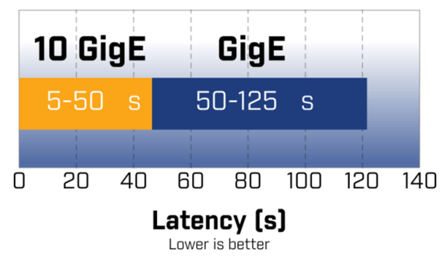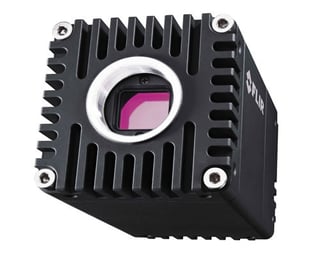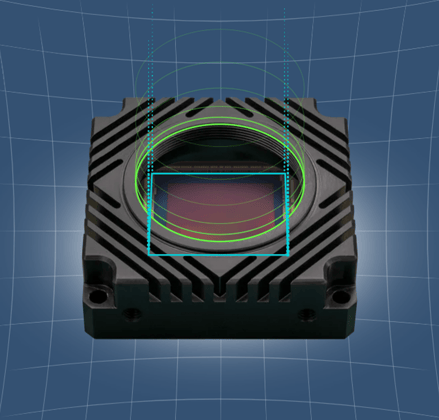Welcome back to Clearview blog! Here you’ll find regular articles about the latest in machine vision, including the latest breakthroughs in cutting-edge technology, technical theories, and insightful discussions on all things related to machine vision.
Last week, we took a look at how 2.5GigE and 5GigE are relaying the foundations for the interface ecosystem, and before that, explored GigE and USB3 frame grabber options, as well as how CoaXPress interfaces compare against these connection types.
This week, we will be talking about the fastest, most powerful GigE interfaces, suitable for the highest calibre applications: 10GigE and 25GigE.
If you’re new to these topics, and find yourself asking ‘Which interface is right for me?’ or ‘What is a frame grabber?’, then be sure to check out our dedicated overview of frame grabbers and interfaces.
The high-power gigabit standard: 10GigE
When GigE first arrived on the scene in 2006, it changed the machine vision game. Familiar RJ45 connectors, low latency, and plug-and-play functionality thanks to the introduction of GenICam made this interface extremely popular in machine vision projects.
Then came 10GigE. This was a big step up from standard Gigabit Ethernet (1GigE) connections, not only supporting a bandwidth of 10 Gbps over cable lengths of up to 100m, but being lower latency than 1GigE as well.

10GigE is ideal for applications that require high bandwidth over long distances, making it possible to take full advantage of high-performance sensors with higher resolution and frame rate, such as the Sony IMX range of sensors.
10GigE machine vision cameras
Speaking of Sony IMX sensors, here are some examples of sensor resolution and frame rates available with 10GigE:
- Sony IMX252 3.2MP at 216 fps
- Sony IMX250 5.0MP at 163 fps
- Sony IMX420 7.1MP at 112 fps
- Sony IMX255 8.9MP at 93 fps
- Sony IMX253 12.3MP at 68 fps
- Sony IMX530 24.6MP at 44 fps
- Sony IMX342 31MP at 26 fps
You might be wondering which cameras pack these configurations? They’re actually all Oryx 10GigE models from Teledyne FLIR.
Oryx 10GigE – Teledyne FLIR

Oryx 10GigE from Teledyne FLIR
The award-winning Oryx 10GigE camera family allows systems designers to take advantage of the latest sensors by supporting transfer speeds of up to 10Gbps. This enables the capture of 4K resolution, 12-bit images at over 60 FPS. Oryx features include IEEE1588 clock synchronization and full compatibility with several popular third-party software supporting GigE Vision.
Find out more here.
Atlas10 – LUCID Vision Labs
LUCID also offer fantastic 10GigE camera options with their Atlas10 models.

Active sensor alignment in the Atlas10 from LUCID Vision Labs
Packing fast 10 Gigabit Ethernet with Power over Ethernet (PoE) and Sony’s 4th Gen Pregius S CMOS sensors, the Atlas10 delivers simplicity and performance for high-speed applications. All Atlas10 models are actively sensor aligned for maximum optical performance.
Find out more here.
Advantages of 10GigE
With 10GigE, there is no need for workarounds like complicated link aggregation systems or latency-inducing compression. The cameras are quick to set up, and no frame grabbers or additional interface cards are needed, making it easier and faster than single-lane Camera Link and CXP-6 CoaXpress interfaces. That being said, offload NICs can be extremely advantageous to those looking to use multiple 10GigE+ cameras on the same system – but more on that later.
Another big advantage of 10GigE is familiarity and ease of use. Despite improvement after improvement to gigabit ethernet connections, their visible parts are still the same after all this time – standard CAT6A and CAT5E cables with good old RJ45 connectors will mean that users don’t have to keep adopting new types of cable and connectors.
GenICam compliance is another welcome feature here, allowing for quick and easy plug-and-play. 10GigE is compatible with the GigE Vision protocol, ensuring it will work with existing GigE Vision software.
Leaps and bounds ahead: the 25GigE machine vision interface
As 10GigE was the successor to 1GigE it provided the benefits of its predecessor except capable of delivering 10 times the data and frame rate. Accordingly, the 25GigE interface marks a colossal improvement here with a twenty-five-fold increase in data and frame rate capability.
As such, 25GigE offers the



